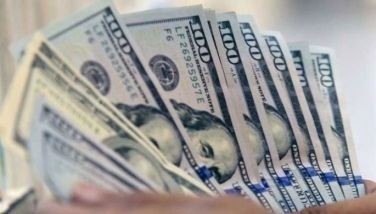Sugar and the food processing industry

In November last year, I had occasion to discuss the sugar industry. At the time, the industry was a hot topic.
After one year and emerging from the high drama of Senate hearings of the problems of the sugar industry, it appears that business as usual reigns supreme in the industry again.
In government, lack of discussion means the policies in place continue.
Current state of the sugar industry. My two November essays on the sugar industry highlighted studies and recommendations being made to reform and liberalize trade and production regarding the sugar industry.
The sugar industry is a shadow of its past history. Today, it serves mainly the Philippine domestic market. The sugar produced is almost entirely for domestic use. In our American colonial times and in the first decades of political independence, sugar was the driving force in the economy, the major source of dollar earnings.
Today, the sugar industry still earns some export, but this is very small. In 2022, sugar exports were a meager $64 million, less than one percent of exports totaling $74 billion.
Despite the reduced profile of the industry in foreign trade, the sugar industry as a whole – as a system of activities creating value within the Philippine economy – is still a significant industry. The industry continues to be significant to the economies of West Visayas, and also parts of Luzon and in Mindanao. The industry contributes sizably to the regional economy.
The problems of the sugar industry appear to be along the value-chain of the industry. These problems are serious at every stage of that value chain, from agricultural production to milling, and to industrial processing through to retail sales.
Productivity of sugar farms and mills. Philippine sugar planting productivity at 5.1 tons per hectare is low compared to major leading exporters like Australia and Brazil where their comparative farm yields are far higher. In both cases, their yields are twice as much. Thailand, by comparison, has a yield that is one-fifths higher than that observed in the Philippines.
Another aspect of productivity relates to the poor recovery experienced by the sugar mills in the Philippines compared to those countries that are more efficient sugar growers. The per ton recovery of sugar for mills in Brazil is 58 percent higher; that for Australia, 45 percent; that for China, 36 percent; and for Thailand, 15 percent.
These data cited were from the Food and Fertilizer Technology Center (FFTC) for Asia and the Pacific Region.
Phl tariff policy for sugar. At the time when the ASEAN Free Trade Agreement (AFTA) was negotiated, the contracting parties dealt with the protection of very sensitive industries by permitting continued protection. Through later agreements, the inclusion of sensitive industries within the fold of AFTA’s zero tariff could be negotiated.
For the Philippines, two industries that it placed in the sensitive list were sugar and rice. Thus, the Philippines became a founding member of AFTA in 1994 while holding on to high protection rates for its sensitive industries.
By 2010, the Philippines agreed to liberalize its tariffs for sugar through the ASEAN Trade in Goods Agreement (ATIGA). It committed to gradually drop its 38 percent tariffs on sugar over five years so that by 2015, the final tariff would be at 5 percent.
Because of the drastic drop in tariff protection within the ASEAN, it is now possible to import sugar from low-cost sources. Even then, however, the domestic price of sugar has remained quite high compared to the world market price of sugar. The high profit premium from importing low cost sugar ought to be shared by price reduction in the market and by access of imported sugar to industrial food processors.
Penalizing the local food processing industry. Continued scarcity of domestic sugar and its high price has penalized consumers and also, as importantly, the local food processing industries because sugar is a major raw material in their production activities.
Do we wonder why many of our local food industry processors cannot grow out of the domestic market? Their products are at a cost disadvantage at retail compared to ASEAN processors that have access to low-cost inputs that includes cheaper raw-sugar.
The regulatory powers of the Sugar Regulatory Administration are in many ways similar to the sugar quota system of the 1930s. That old regulatory framework was designed to capture the gains of access to the US market for the insiders in the industry – the millers and planters that were designated to participate in the export trade.
In the current context, the SRA controls the exclusive power to import and to export as well as the allocation of domestic sugar among processors. Its exclusive power to declare imports and to allocate its use makes it very powerful in guiding who among the sugar industry insiders secure the benefits of low cost imports allocations.
Local food processors have high domestic costs because they have high input costs – labor, energy, and logistics. They are essentially outsiders to the sugar industry. Big food companies take care of themselves by buying into the sugar milling industry, as some domestic companies have.
Small and medium food processors are at the mercy of the SRA’s allocation system for their use. Large domestic food processors can improve their market position if they also owned sugar mills. That could mean not only cost savings through the integration of their operations. If said sugar mills also engaged in trading, their market power is further enhanced.
Do we wonder why big foreign food processors located in the country are only selling their output in the Philippines and not producing these in the country?
Do we wonder why many big multinational food and other sugar-using companies locate their production facilities in other ASEAN countries even as they look at us as target market for the sale of their products?
For archives of previous Crossroads essays, go to: https://www.philstar.com/authors/1336383/gerardo-p-sicat. Visit this site for more information, feedback and commentary: http://econ.upd.edu.ph/gpsicat/
- Latest
- Trending

























